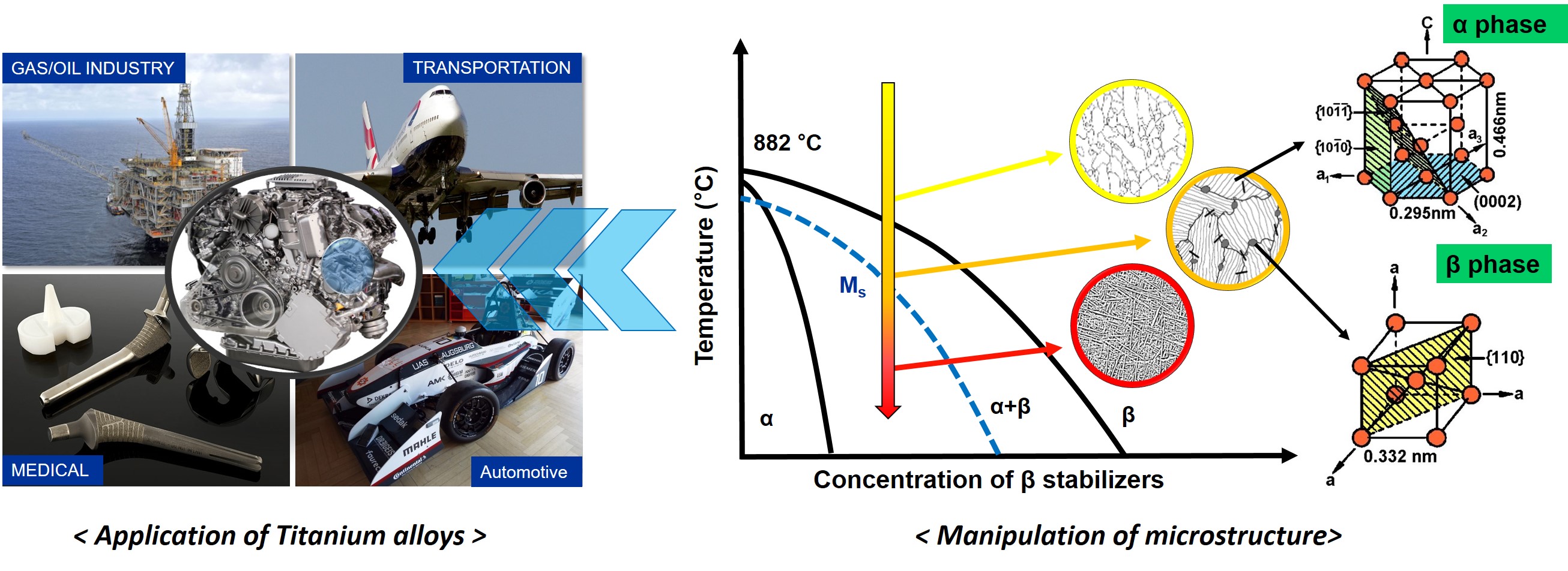Engineering Alloys
Engineering Alloys
Ni-Co-based superalloys

Superalloys are characterized by high-temperature strength, creep, oxidation and corrosion resistance, and are the key materials in aircraft engines and industrial gas turbines. High creep strength at elevated temperatures is usually achieved by means of precipitation hardening and /or by solid solution hardening. Commercial superalloys are mostly Ni-based and consist of ten or even more alloying elements, each of which with a specific role. Hence, superalloys represent one of the most complex and sophisticated material classes which mankind has ever developed for real-world engineering application. The aim of this research is to explore and develop new alloy systems based on cobalt, which show superior high-temperature properties and are promising alternatives to Ni-based alloys.
Ti-based alloys

Titanium alloys have been developed for a wide range of applications (e. g. biomedical, aerospace, military, and automobile applications) due to their excellent strength-to-weight ratio, corrosion resistance, and biocompatibility. The properties of titanium alloys can be tailored by controlling the processing routes and consequently the microstructure, which usually consists of alpha and beta grains. Recently, various products made of titanium alloys have been successfully fabricated by means of additive manufacturing – a new fast growing R&D field dealing with near net shape fabrication of metallic parts. However, anisotropic microstructures of as-printed samples lead to unfavorable anisotropic material properties. The aim of this research is to explore and understand the complex microstructure-property relationships of titanium alloys and develop new alloy design and processing strategies.


